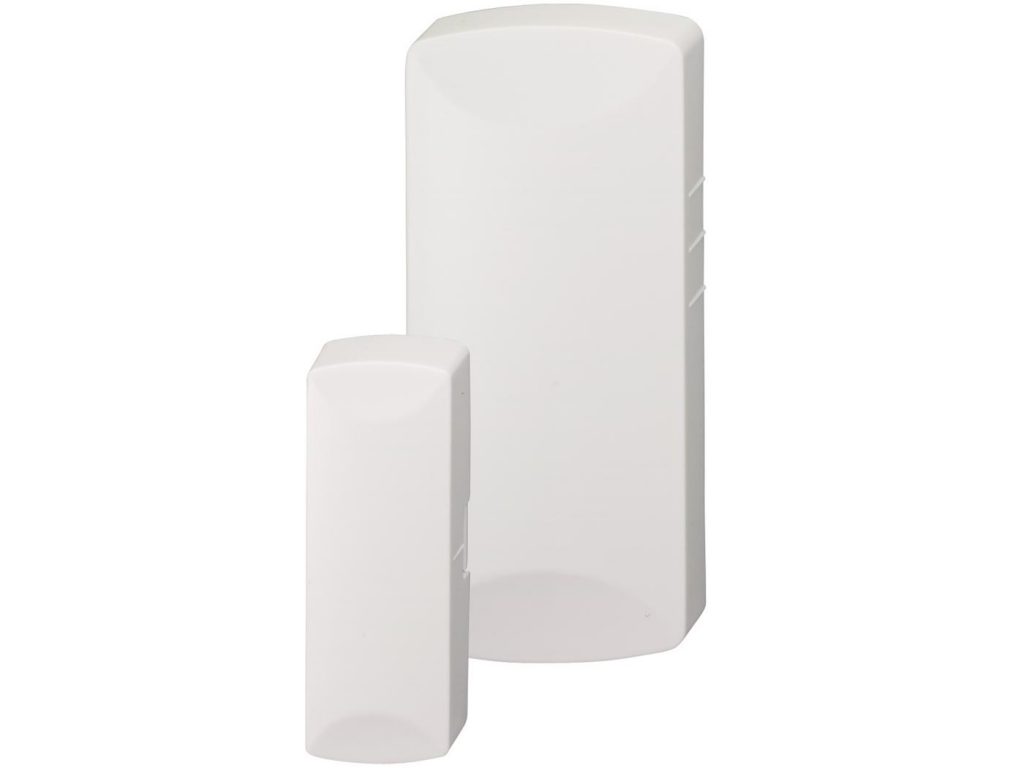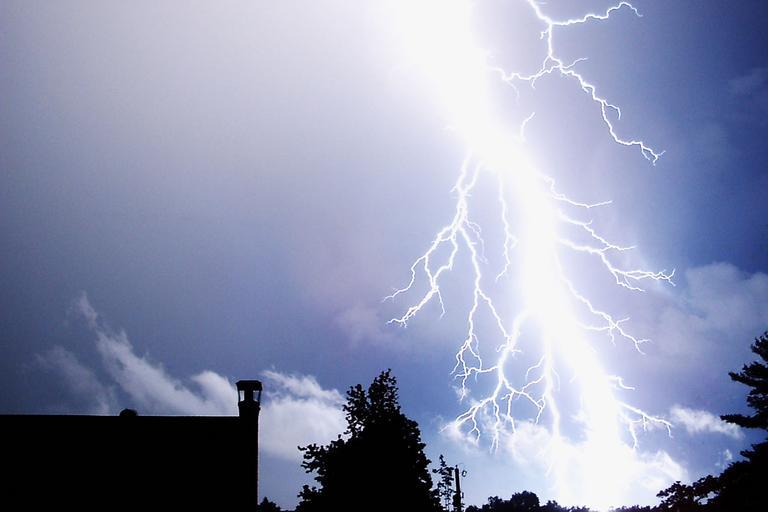Quite a while ago, we created a post aimed at Tackling Ten Common Home Security Myths. We designed that post to ease the fears that many customers feel when considering an alarm installation. One of these “myths” that we hear most about revolve around the inevitability of false alarms. Of course, false alarms do happen, much to the chagrin of frustrated home and business owners. However, a little bit of troubleshooting can go a long way in cutting down on, and even elimating, nuisance false alarms. In this post, we share some causes of false alarms, as well as how to stop them.
We will share several different false alarm causes, as well as various fixes for each type of false alarm. Since door and window sensors make up the majority of many alarms, we will focus on these sensors first. From there, we’ll look at perhaps the most common type of false alarm: those caused by motion detectors. Next, you’ll see some of the false alarm threats revolving around monitored fire safety devices. Finally, last but certainly not least, we will show you how some false alarms have nothing to do with your alarm’s sensors. Sometimes, your alarm’s control panel itself can lead to false alarms. Now, let’s see how door sensors can cause false alarms, and how to address them if this happens.

Door sensors, such as this wireless model by Interlogix, activate when the magnet (on the left) separates from the sensor itself (on the right).
Door and Window Sensor-Related False Alarms
As we’ve pointed out, we use door and window sensors more than any other type of security contact. These sensors detect an open door or window using a couple different methods. In most cases, we install a hardwired or wireless contact on either the body or the frame of a door or window. Then, we install a magnet that lines up with this contact on the opposite surface. When the door or window opens, the magnet loses contact with the main part of the sensor and creates an alarm response.
With this setup, door and window contacts do not create too many false alarms. However, occasionally weather-related wear and tear pulls doors and windows apart from their frames. This can cause the gap between the sensor’s contact and magnet to grow. Eventually, this gap can sometimes create false alarms, as the magnet no longer “senses” a connection to the contact. Therefore, we always look at the gap between the contact and the magnet to troubleshoot these false alarms. Moving the contact or fixing the door or window frame can solve this issue. Now, let’s look at motion detectors, and their well-earned reputation as one of the top false alarm causes in the industry.
Motion Detector-Related False Alarms
When we use the term “false alarm,” we generally refer to alarm events that do not indicate a burglary. However, this term can be misleading, especially in the case of motion detector-related falses. Motion detectors can use different types of technology to detect motion, although the vast majority of them use heat-sensing technology. By sensing a change in a room’s heat index, motion detectors can sense a new object entering a room.
Most false alarms caused by these sensors still actually indicate a properly working sensor. For example, small animals may often create alarm events in warehouses and garages. Additionally, a burst of sunlight coming through a winodw can also create a motion event, as it replicates the heat caused by a person walking into a room. Surprisingly, even bugs can cause alarms if they crawl inside a detector! In these instances, the detector works as designed, even if it leads to an annoying “false” alarm.

Pet-immune motion detectors, such as this model by Honeywell, are less sensitive than their non-pet immune counterparts, which can help cut down on false alarms.
We encourage customers to use “pet-immune” motion detectors to cut down on false alarms. These detectors require a significant increase in a room’s heat to cause an alarm. This leads to fewer alarms caused by smaller animals. Additionally, we recommend installing motion detectors mindfully. For example, aiming motion detectors away from windows cuts down on sun-related alrms. Next, let’s look at how monitored fire safety equipment can cause false alarms.
False Alarms Related to Fire Safety Equipment
In our post on Adding Monitored Fire Detection to Your Home, we share how we add smoke, heat, and carbon monoxide detection to monitored alarm systems. We always recommend adding this potentially life-saving equipment to your property. Unlike most fire alarms, which only create a sounder response, monitored detectors will create a fire department dispatch. This response can save your home, and even the life of you or a family member!
Fire safety devices can create false alarms for a few different reasons. Just as with motion detectors, sometimes these alarms actually point to the detectors doing their jobs. For example, smoke detectors installed near bathrooms sometimes go into alarm when steam escapes the bathroom. This indicates a properly working detector, as these devices cannot distinguish steam from a shower from smoke from a fire. For this reason, we generally do not install detectors close to bathroom doors.
Likewise, sometimes changes in a home’s layout can create alarms. For example, duct systems that route kitchen smoke into your hallway can activate your hallway smoke detectors. Occasionally, customers have these systems installed after we’ve already installed their smoke detectors. In this case, we need to move our equipment to solve the issue. Finally, dust and debris buildup can also represent false alarm causes. Loose debris can settle into the detection chamber of a fire safety device. This can replicate the arrival of smoke and create an alarm. We recommend periodic cleaning of these devices to combat this risk. Now’s let’s look at how your alarm panel itself can create bad alarm signals, rather than your sensors.
Panel-Related False Alarms
Occasionally, alarm users experience false alarms that do not stem from any alarm sensors. In this case, the alarm panel itself could prove at fault. After all, when alarm contacts activate, they send a signal to the main panel. In turn, the panel sends a signal to the central station to call for help. If the panel has any issues, it could end up sending out for help even if none of the alarm contacts detect trouble! Lightning strikes or power surges can create electrical problems within an alarm panel that create this scenario.

Lightning strikes can cause electrical issues, which in turn can create security panel-generated false alarms.
Sometimes, we even run into a situation with a “runaway panel” that stays in a continuous state of alarm. This situation leads to plenty of nuisance, as the siren is blaring non-stop. Furthermore, runaway panels often lead to unecessary police dispatches. In these cases, we must power the panel down to stop the constant alarm signals. If you have false alarms from several sifferent zones in a short amount of time, your alarm panel is likely to blame, rather than your alarm’s sensors and motion detectors. Changing out the panel, while keeping your current sensors in place, generally fixes this issue.
Diagnosing False Alarm Causes and Putting them to and End
We hope that you have found this post on false alarm causes — and their fixes — useful. Unfortunately, false alarms provide a major point of frustration for alarm customers. Moreover, they can even lead to lesser security, as some alarm customers cancel their monitoring service due to the headaches they cause. If you have experienced these issues yourself, or if you have any questions about the material in this post, please do not hesitate to contact us.
Furthermore, we also encourage you to take advantage of our free site survey program. We offer these surveys for both new and existing customers alike. While onsite, we can address any false alarm or general security issues you may have. Additionally, we can make our own suggestions based on our observations of your property. Together, we can create a security plan that keeps you as safe and secure as possible, without the fear of false alarms.
All stock photos used under the Creative Commons CC0 License.
